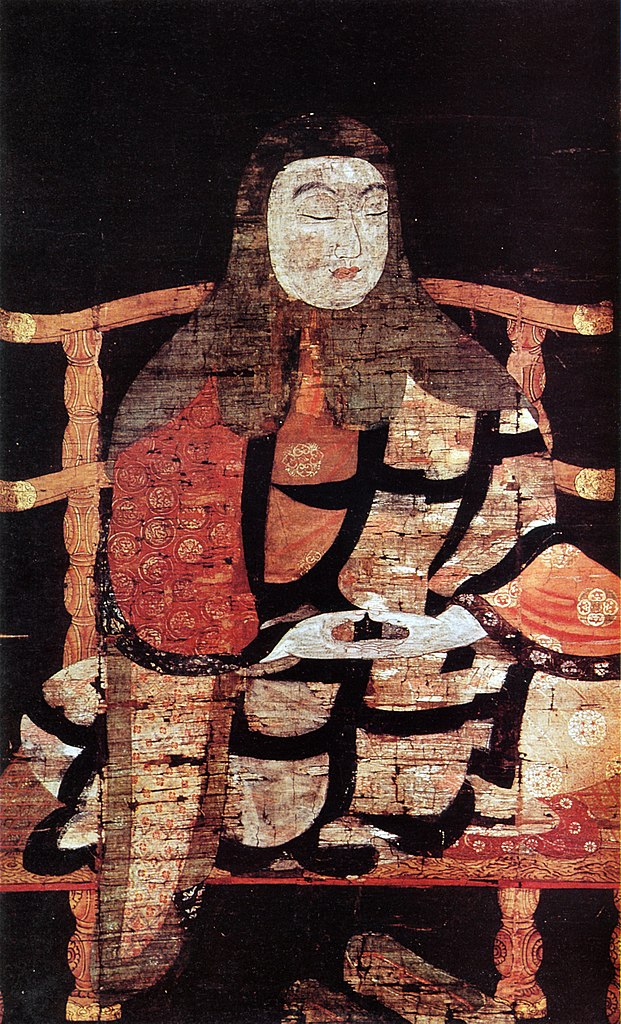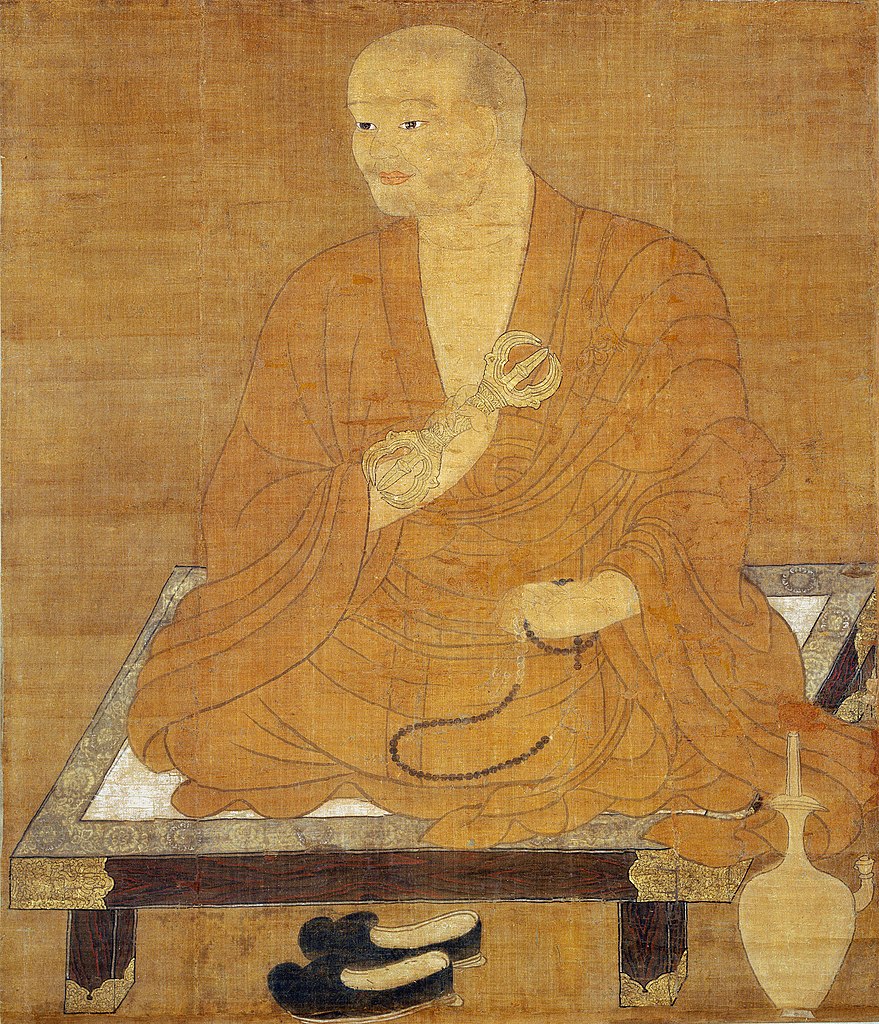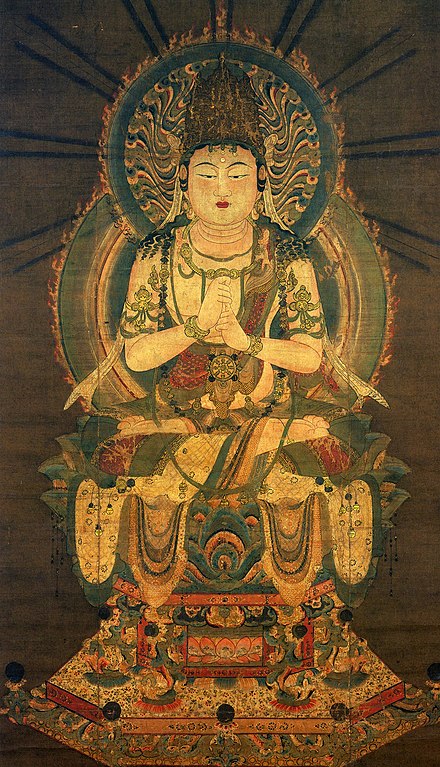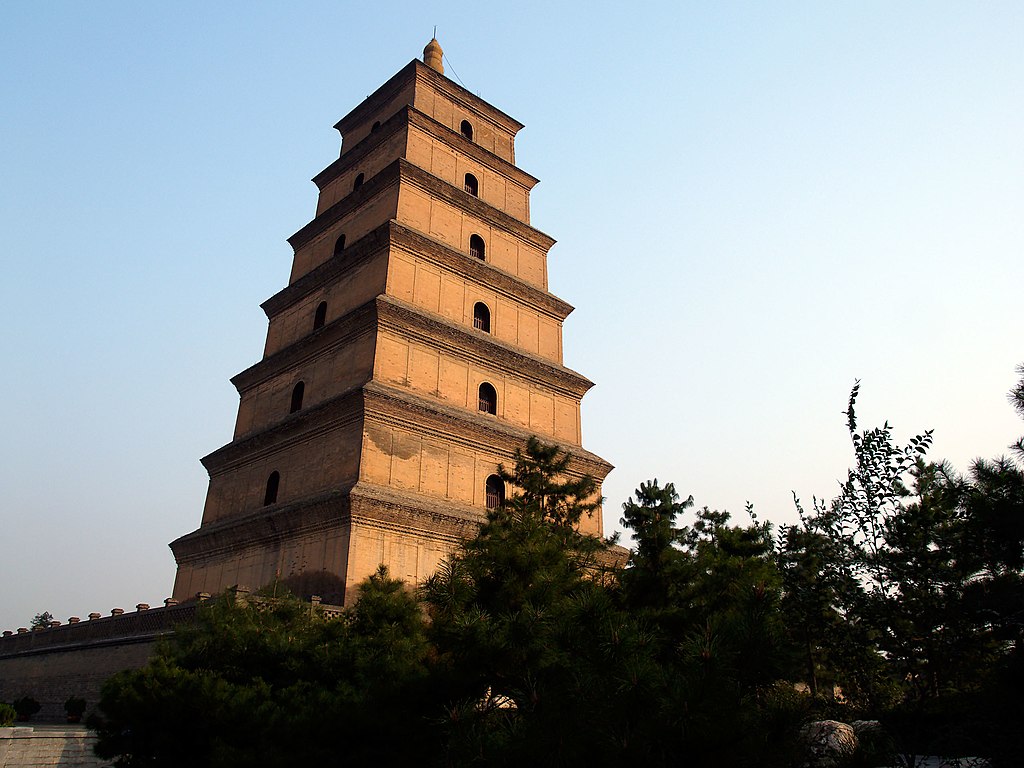Saicho and Kukai – Trip to China

In 804, a government-sponsored expedition to China was organised, in which Saicho (766/7-822) and Kukai (774–835) took part, though it is unlikely that the two men met during the trip.
Saicho had been a disciple of Master Gyohyo who himself was a disciple of Dao-xuan, a prominent Chinese monk from the Chinese Tiantai school. So his focus when in China was to study with Master Daosui, the Seventh Patriarch of the Tiantai school, in order to obtain from the emperor of Japan the official authorisation to found the Japanese Tendai school.
Kukai, on the other hand, had developed a strong interest in the Mahavairocana Tantra (referred to as the Mahavairocana Sutra in Japan, and the foundational text of esoteric teachings) following decisive spiritual experiences he had after a retreat during which he had recited the Akasagarbha mantra a million times. He had obtained a copy of the text, but much of it was in Sanskrit in the Siddham script. His focus in China, then, was to elucidate this text, and he did so by learning Sanskrit, and receiving esoteric teachings from Master Huigo, who had studied the Vajrayana tradition with an Indo-Sogdian monk, and translated the Mahavairocana Tantra. Huigo initiated Kukai as a Dharma heir.

After their return to Japan, Saicho and Kukai developed a friendly relationship that lasted for several years (before breaking down when their two schools came to compete with each other), which allowed Saicho, the founder of the Japanese Tendai school, to receive the esoteric teachings Kukai had been initiated into in China. Whereas these esoteric teachings were regarded as the highest teachings in Kukai’s new Shingon school, Saicho sought to integrate them with the teachings of the Lotus Sutra in the Tendai school.
What are esoteric teachings?
Kasulis describes Kukai as a “man who wanted to understand everything.” He, however, quickly adds, “to understand everything is not the same as knowing everything, as simply amassing all the facts about reality.” Kasulis contrasts engaged knowing with detached knowing. “Esotericism promotes engaged knowing of the sort that cannot be understood via explanations in readings or lectures, but must be experienced for oneself under the guidance of a master. The master teaches by showing and doing rather than by saying and listening, conducting rituals that employ the entire bodymind, not just the intellect, rituals that the student replicates for oneself. Thus, esotericism does not study reality in a detached way but is known through a performative engagement with it.”
“Kukai’s intention was … to know reality somewhat like how we know a person. Not to be confused with knowing about a person (which derives from reading and hearing about that individual), truly knowing a person involves some shared intimacy. To know another is to be inside that person’s world.” Even in knowing an object, there is a difference between knowing it in a detached way and knowing it in an engaged way. “When Kukai left the academies on his quest to ‘understand’, he wanted to engage the world intimately, not as a detached observer. He wanted to know reality the way a potter, not a geologist, knows clay.” And when Kukai started to read the Mahavairocana Sutra (Jap Dainichi-kyo), he “realized that the text could only be fully appreciated by engaging it with a master from the tradition.”
Kukai presents the points of contrast between exoteric and esoteric teachings in terms of the “source of the teachings,” the “audience of the teachings,” and the “form of expression.”

In terms of the source of the teachings, the historical Sakyamuni Buddha or a Celestial Buddha is the teacher in exoteric teachings whereas, in esoteric teachings, Dainishi, the Buddha-as-Cosmos is expounding the truth. John Krummel explains that for exoteric Buddhism, ultimate truth, or “embodiment of truth” (Skt dharmakaya, Jap hosshin) remains an abstraction. So it does not preach. “But for esoteric Buddhism, the phenomenal world from the enlightened perspective — that is, the standpoint of the Buddha — is the preaching activity of the cosmic Buddha Dainichi (Skrt: Mahavairocana) and as that “embodiment of truth.” Hence while exoteric teachings may be traced to Sakyamuni, the historical Buddha, esoteric teachings come directly from the Buddha Dainichi.”
In terms of the “audience of the teachings,” Krummel says that “for exoteric Buddhism, it takes three infinitely long epochs of repeated rebirths of training in order for one to attain enlightenment (Buddhahood); but esoteric Buddhism makes it possible for anyone, irrespective of karmic dispositions, to immediately become a buddha in one’s present embodied state.”
In terms of the expression of the teachings, since the dharmakaya cannot be put into words in exoteric Buddhism, the teachings must resort to skillful means “depending on what it does for the listener, not on the reality it designates,” whereas esoteric Buddhism provides a practice “whereby esoteric truths hidden in the sutras as well as in the world at large can be experienced.” So “the Dharma itself is being perpetually expressed in and as its embodiment in the phenomenal world, in its sounds, movements, and forms, and even in the thoughts of sentient beings.” The dharmakaya includes the Buddha’s creative and communicative activities.
Sources:
Thomas P. Kasulis – Engaging Japanese Philosophy (2018)
John W. M. Krummel – Kukai entry in the Stanford Encyclopedia of Philosophy (2022)

